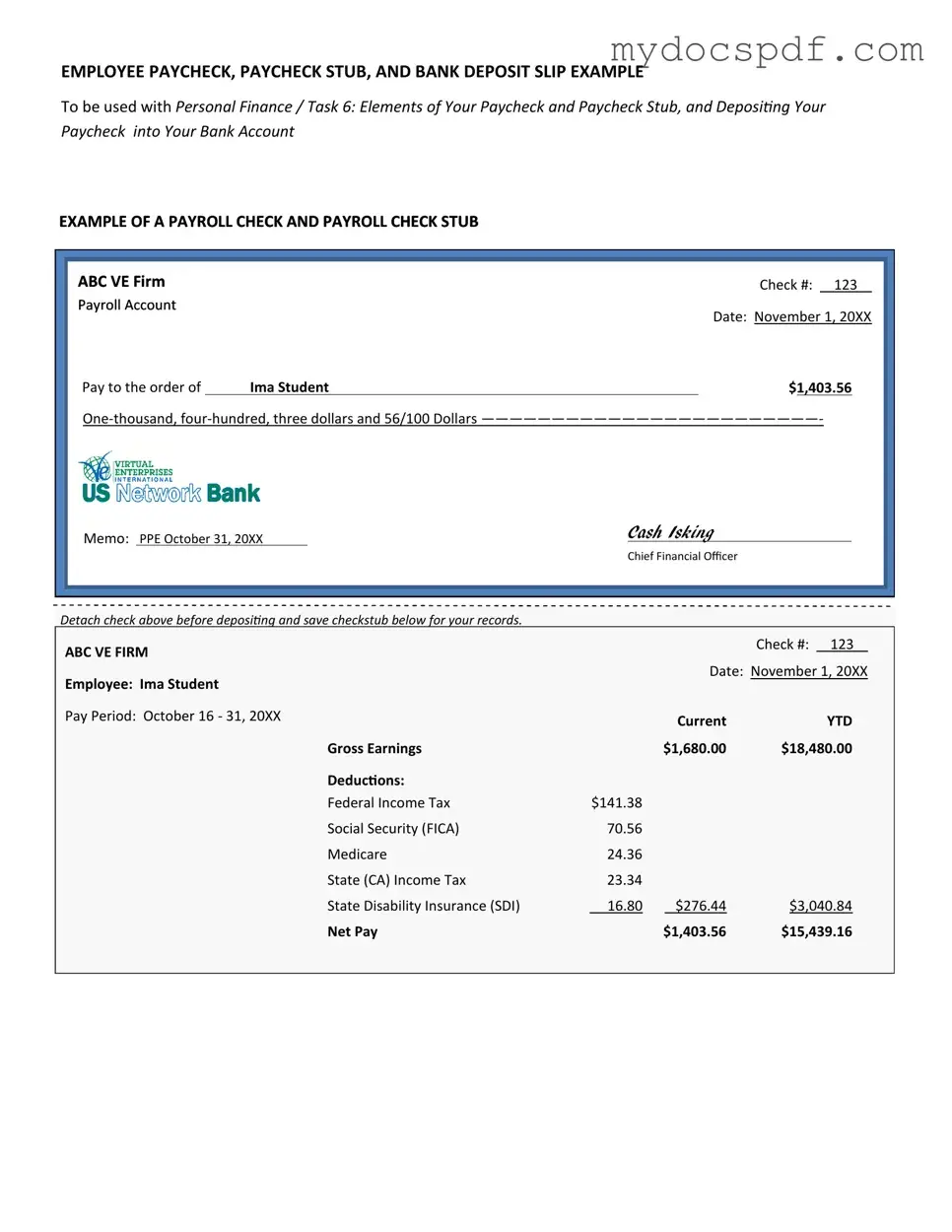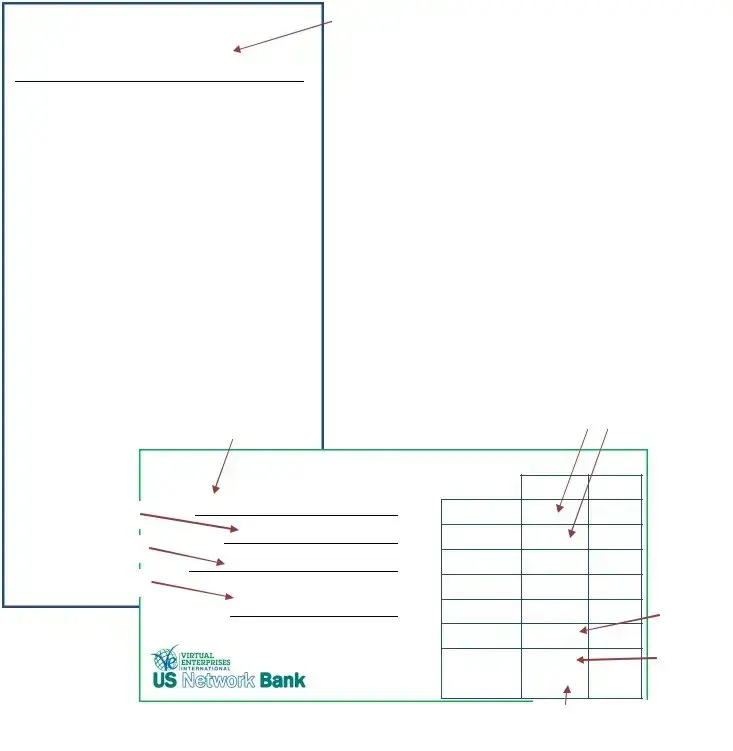The Payroll Check form is a critical document in the realm of employee compensation, serving as a record of payment issued to employees for their work. This form typically includes essential information such as the employee's name, identification number, and the payment period covered. Additionally, it details the gross pay, deductions for taxes and benefits, and the net pay that the employee will receive. Employers often use this form not only to ensure accurate payments but also to comply with federal and state regulations regarding payroll processing. The Payroll Check form may also feature the employer’s information, including their name and address, which helps maintain transparency in financial transactions. By providing a clear breakdown of earnings and deductions, this form plays a pivotal role in fostering trust between employers and employees, ensuring that both parties are aligned on compensation matters.


